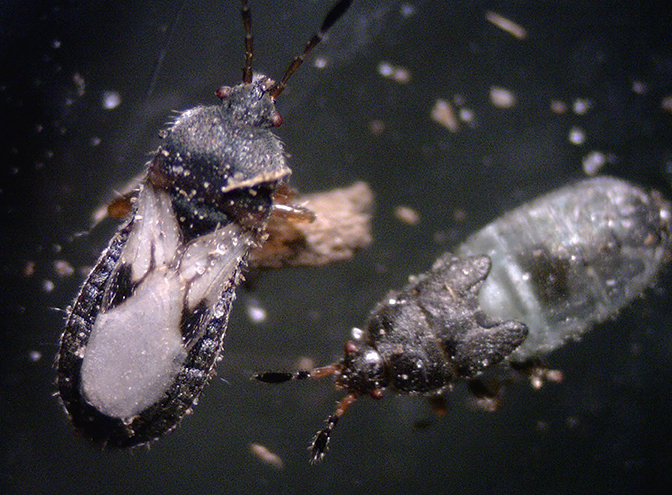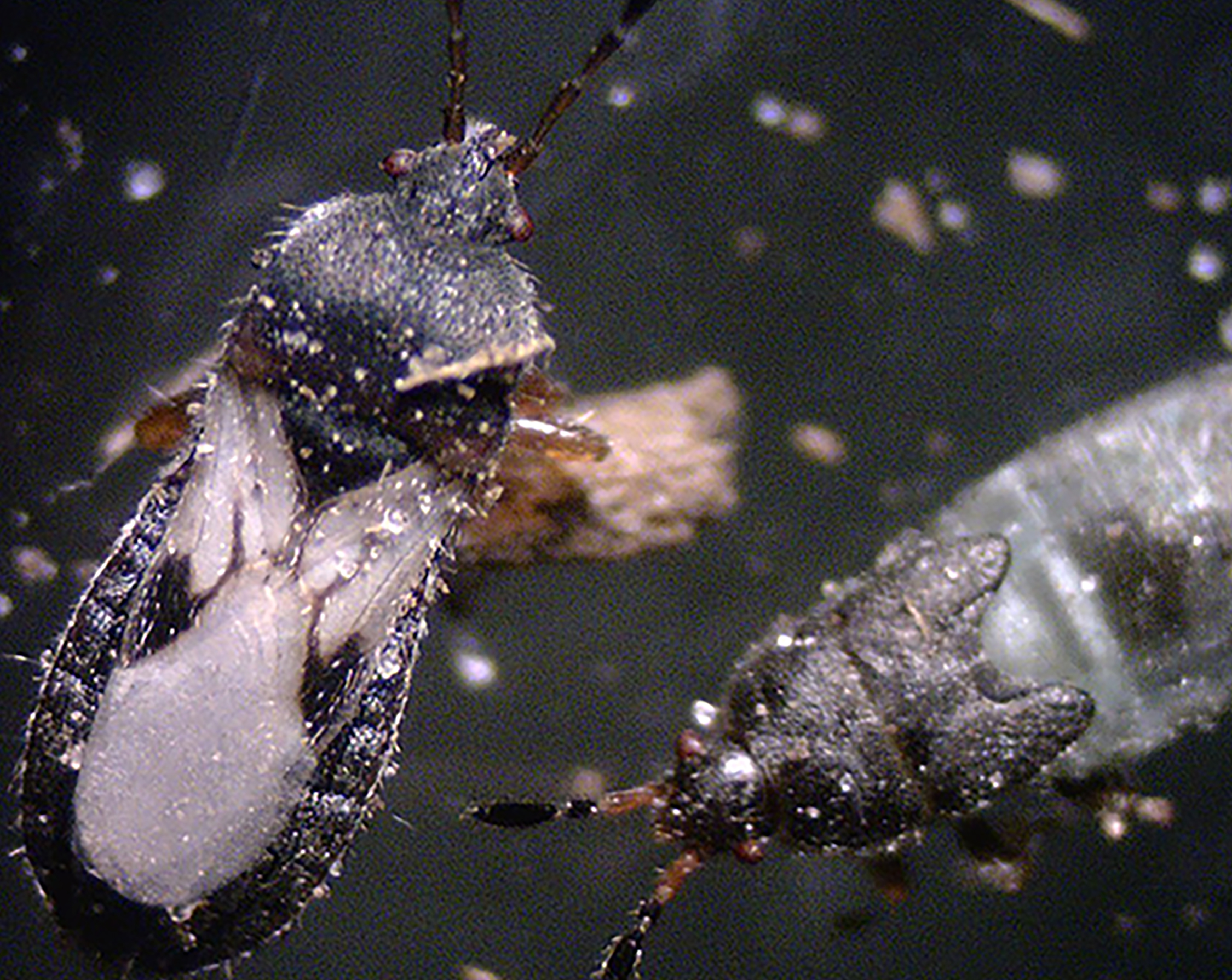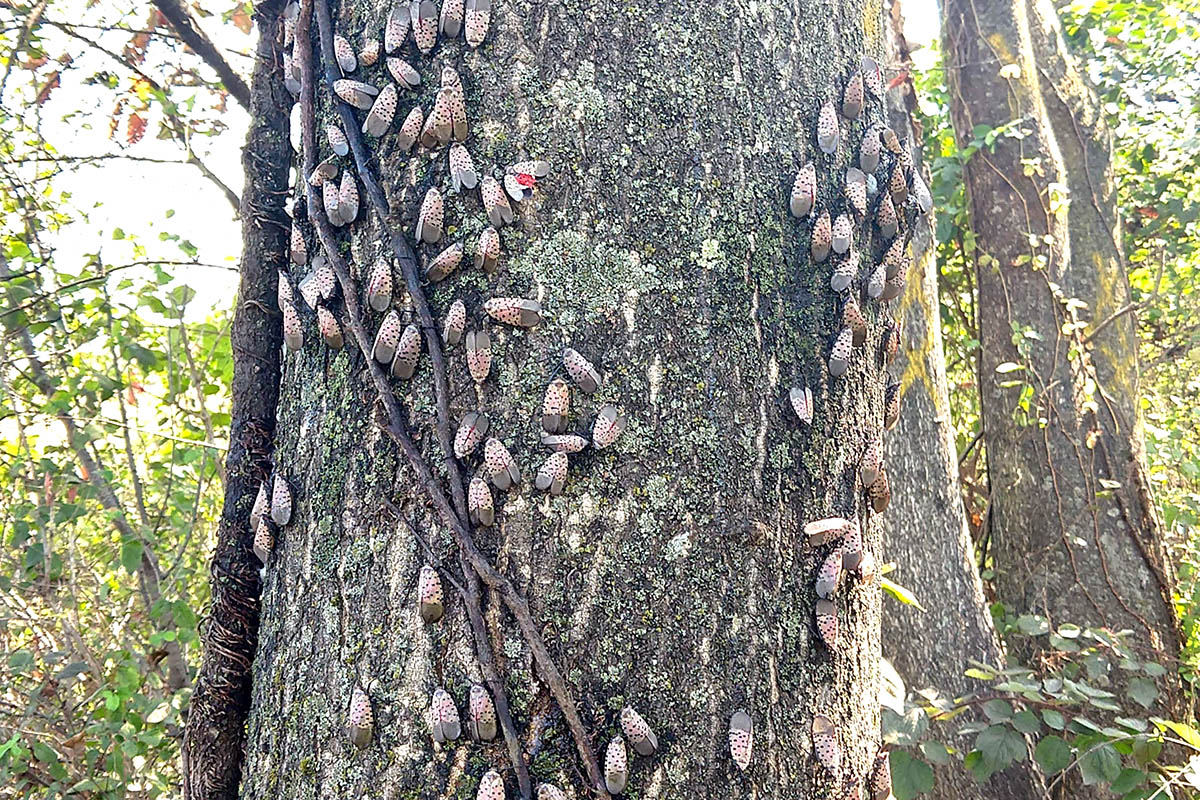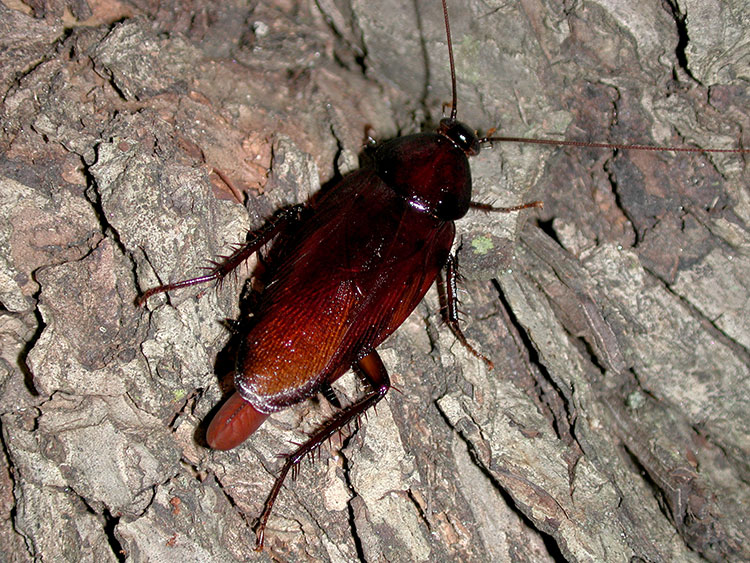Georgia lawns are looking parched thanks to drought conditions statewide, but the lack of rain has also opened the door for chinch bugs, a major dry weather pest of St. Augustinegrass and other turfgrass lawns.
University of Georgia Cooperative Extension agent Andrew Sawyer says it’s easy to tell if chinch bugs are damaging your lawn: Dead areas of the lawn will show up quickly as chinch bug damage occurs very fast. It is most often initially noticed on sunny areas of the lawn.
Adult chinch bugs are about 1/5-inch long and light in color, with small, black, triangular patches on their wings. The nymphs vary in color from reddish with a white band across the back to black as they near adulthood.
Chinch bugs use their piercing mouthparts to feed into the base of a turfgrass blade. Turfgrass injury appears as spreading patches of brown, dead grass. St. Augustinegrass is the most seriously injured, but other lawn grasses, including zoysiagrass, bermudagrass, bahiagrass and centipedegrass, are also subject to attack.
“To confirm you have chinch bug damage, search the edges of a dead patch. Pull back the turf and thatch where you can see the soil surface,” said Sawyer, the UGA Extension Agriculture and Natural Resouces agent in Thomas County, Georgia. “You can also look inside the leaf sheaths where the grass blades come together at the base of the plant.”
Sawyer also suggests an alternative method, called the “flotation method,” for identifying chinch bugs. Remove both ends of a coffee can or similarly sized can. Stick one end of the can 2 to 3 inches into the ground. Fill the can with water and keep the water level up for approximately five to seven minutes. If there are chinch bugs present in the lawn, they will float to the top.
Homeowners are advised to check multiple areas of their lawn if they don’t see chinch bugs at first glance.
UGA entomologist Kris Braman says 20 to 25 chinch bugs per square foot can cause damage. “This monitoring technique should be repeated in several spots at the edge of the suspected area to increase chances of finding the bugs,” she said. “Treat if populations are at or above the damage threshold. Pesticides should not be applied to turf in dry soil to avoid potential chemical injury. Irrigate the lawn several hours to a day before treating.”
Insecticide treatments applied two to three weeks apart can help control the pest.
“You are likely to need more than one application for serious chinch bug problems,” Sawyer said. “Use different products for repeat treatments to reduce the chance of resistance.”
Predominantly a dry weather pest, chinch bugs are susceptible to infections from naturally occurring fungi during cool, moist periods. Sawyer recommends watering frequently during the times the bugs are active to help fight them, which is typically around mid- to late summer.
Sawyer also says cultural practices can be used to thwart chinch bug damage.
“Heavily fertilized St. Augustine lawns are more susceptible to chinch bugs,” he said. “Use slow-release fertilizers in the summer and reduce rates by half.”
Stronger roots help resist insect attack, so mow St. Augustinegrass at three inches and mow often enough so that no more than one-third of the leaf blade is removed at any one time, he said.
Keep mower blades sharp, as a clean cut reduces stress on the grass and makes the lawn more resistant to chinch bug injury.
For more information about chinch bugs, go to lpm.uga.edu/turf/chinchbugs.html.








